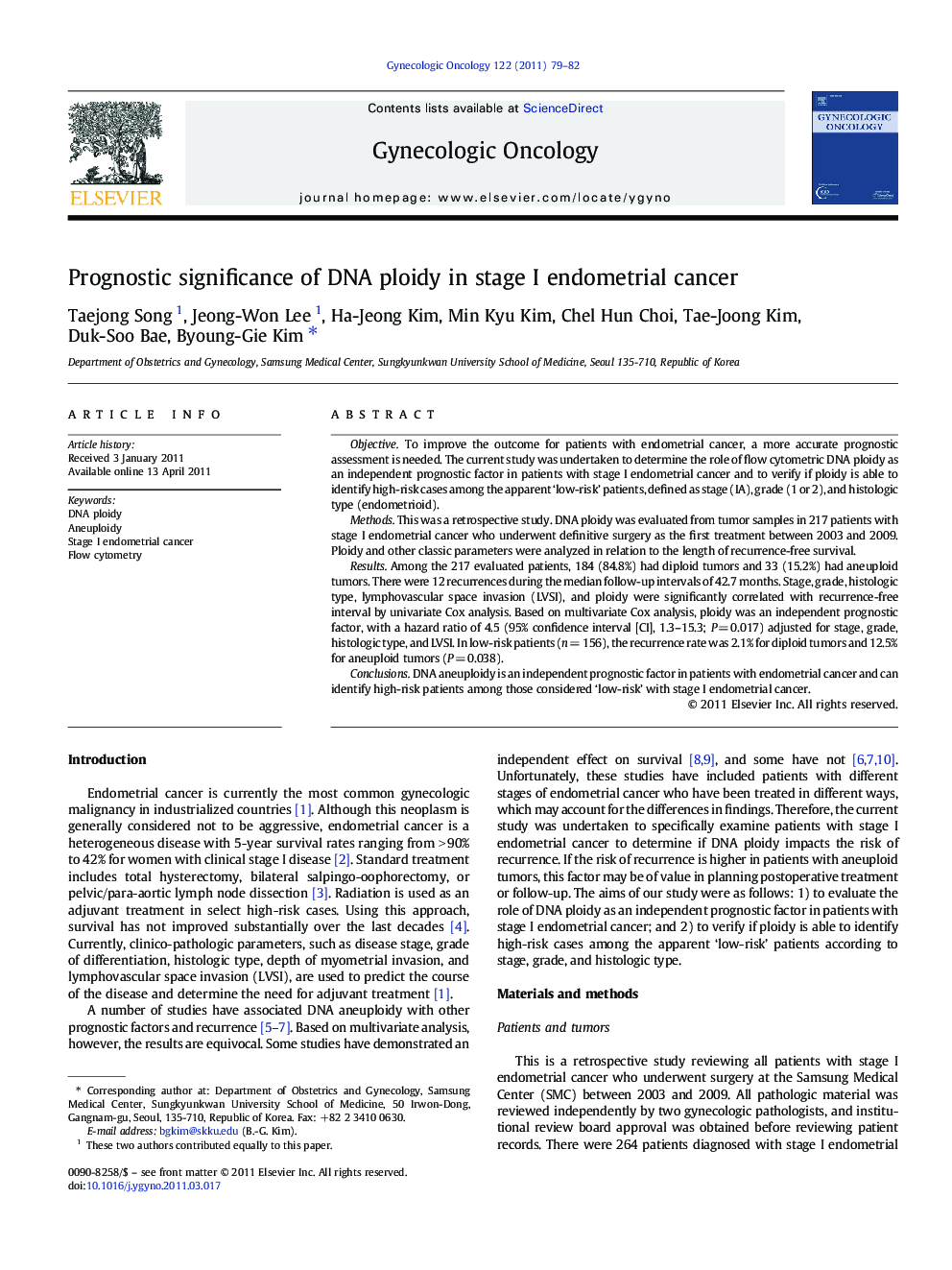| Article ID | Journal | Published Year | Pages | File Type |
|---|---|---|---|---|
| 3943015 | Gynecologic Oncology | 2011 | 4 Pages |
Objective.To improve the outcome for patients with endometrial cancer, a more accurate prognostic assessment is needed. The current study was undertaken to determine the role of flow cytometric DNA ploidy as an independent prognostic factor in patients with stage I endometrial cancer and to verify if ploidy is able to identify high-risk cases among the apparent ‘low-risk’ patients, defined as stage (IA), grade (1 or 2), and histologic type (endometrioid).Methods.This was a retrospective study. DNA ploidy was evaluated from tumor samples in 217 patients with stage I endometrial cancer who underwent definitive surgery as the first treatment between 2003 and 2009. Ploidy and other classic parameters were analyzed in relation to the length of recurrence-free survival.Results.Among the 217 evaluated patients, 184 (84.8%) had diploid tumors and 33 (15.2%) had aneuploid tumors. There were 12 recurrences during the median follow-up intervals of 42.7 months. Stage, grade, histologic type, lymphovascular space invasion (LVSI), and ploidy were significantly correlated with recurrence-free interval by univariate Cox analysis. Based on multivariate Cox analysis, ploidy was an independent prognostic factor, with a hazard ratio of 4.5 (95% confidence interval [CI], 1.3–15.3; P = 0.017) adjusted for stage, grade, histologic type, and LVSI. In low-risk patients (n = 156), the recurrence rate was 2.1% for diploid tumors and 12.5% for aneuploid tumors (P = 0.038).Conclusions.DNA aneuploidy is an independent prognostic factor in patients with endometrial cancer and can identify high-risk patients among those considered ‘low-risk’ with stage I endometrial cancer.
Research highlights► Role of DNA ploidy in stage I endometrial cancer: not established. ► DNA aneuploidy: independent prognostic factor in stage I endometrial cancer. ► DNA aneuploidy: identify high-risk patients among those considered ‘low-risk’ with stage I endometrial cancer.
